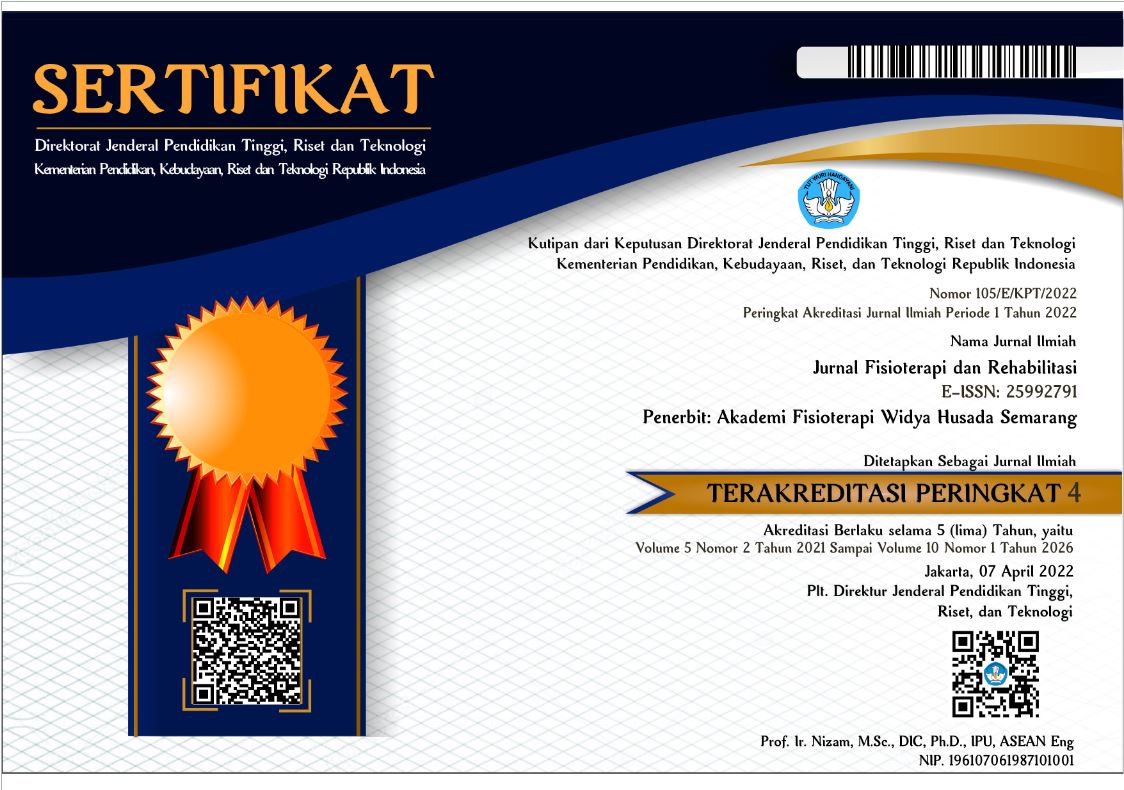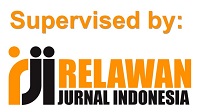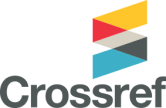PENGARUH TERAPI LATIHAN DAN PEMASANGAN BANDAGE PADA CONGENITAL TALIPES EQUINO VARUS BILATERAL DI YPAC SEMARANG : LAPORAN KASUS
EFFECT OF EXERCISE THERAPY AND BANDAGE USAGE IN CONGENITAL EQUINO TALIPES BILATERAL VARUS AT YPAC SEMARANG : CASE REPORT
Abstract
Background : Congenital Talipes Equino Varus (CTEV) or commonly called Clubfoot is a general term used to describe a general deformity which is foot changes from its normal position. Problems that occur in the Congenital Talipes Equino Varus Bilateral case are the limited range of motion on both ankles, the presence of contractures in the posterior tibialis muscle. Physiotherapy role by providing modalities such as bandage usage, stretching, wall bars exercise, parallel bars exrcise and easy standing exercise.
Case Presentation : Patients in this case were 9-year-old women using interventions in the form of bandage usage, wall bars exercise, parallel bars exrcise and easy standing exercise for 6 sessions.
Method : This case report assesses the patient's joint motion range by measuring differences between pre-test and post-test.
Results: Patients do not improved in the ankle range of motion.
Conclusion : In this case, it was shown that exercise therapy given and bandage usage on 9-year-old patients with CTEV conditions could not change the patient's ankle range of motions.
Downloads

This work is licensed under a Creative Commons Attribution 4.0 International License.
The use of the article will be governed by the Creative Commons Attribution license as currently displayed on Creative Commons Attribution 4.0 International License.
Author’s Warranties
The author warrants that the article is original, written by stated author(s), has not been published before, contains no unlawful statements, does not infringe the rights of others, is subject to copyright that is vested exclusively in the author and free of any third party rights, and that any necessary written permissions to quote from other sources have been obtained by the author(s).
User Rights
JFR's spirit is to disseminate articles published are as free as possible. Under the Creative Commons license, JFR permits users to copy, distribute, display, and perform the work. Users will also need to attribute authors and JFR on distributing works in the journal.
Rights of Authors
Authors retain all their rights to the published works, such as (but not limited to) the following rights;
- Copyright and other proprietary rights relating to the article, such as patent rights,
- The right to use the substance of the article in own future works, including lectures and books,
- The right to reproduce the article for own purposes,
- The right to self-archive the article
Co-Authorship
If the article was jointly prepared by other authors, any authors submitting the manuscript warrants that he/she has been authorized by all co-authors to be agreed on this copyright and license notice (agreement) on their behalf, and agrees to inform his/her co-authors of the terms of this policy. JFR will not be held liable for anything that may arise due to the author(s) internal dispute. JFR will only communicate with the corresponding author.
Miscellaneous
JFR will publish the article (or have it published) in the journal if the article’s editorial process is successfully completed. JFR's editors may modify the article to a style of punctuation, spelling, capitalization, referencing and usage that deems appropriate. The author acknowledges that the article may be published so that it will be publicly accessible and such access will be free of charge for the readers as mentioned in point 3.












